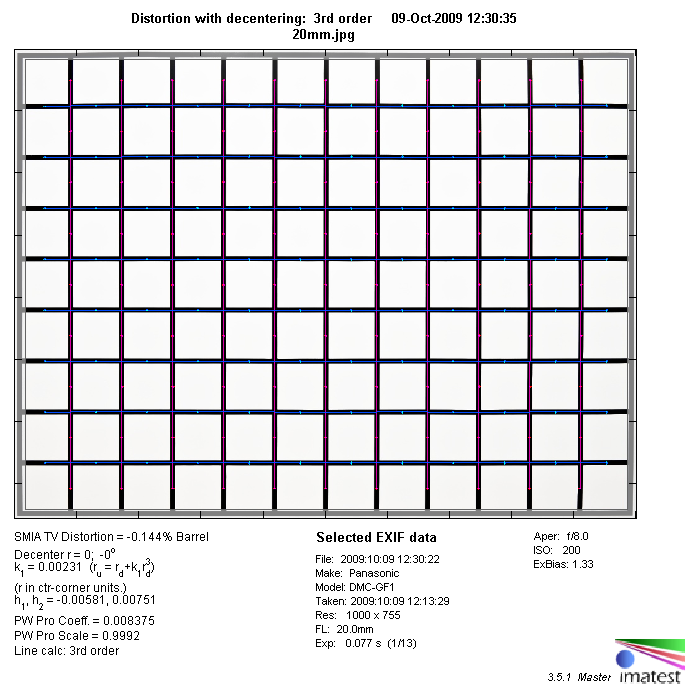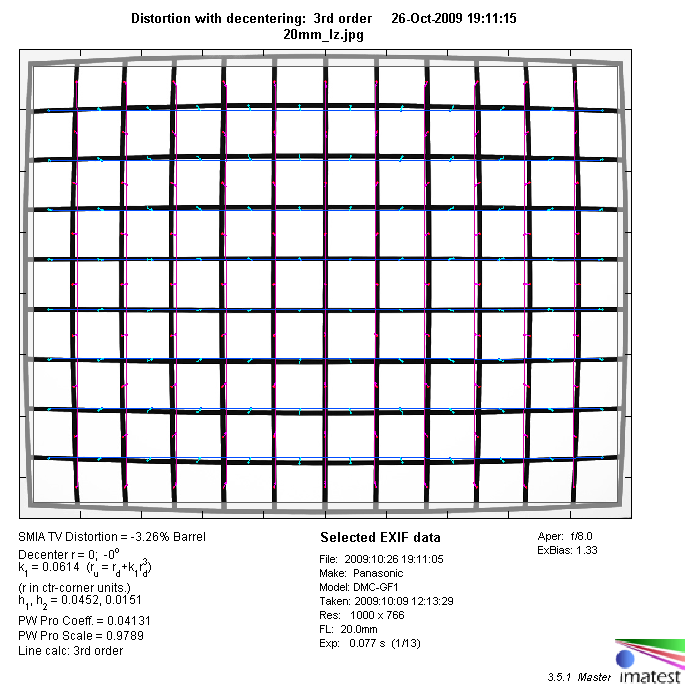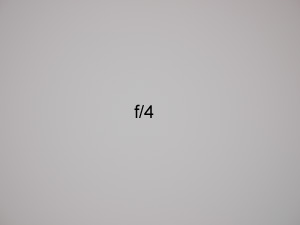|
Panasonic Lumix G 20mm f/1.7 ASPH - Review / Lens Test Report - Analysis |
|
Lens Reviews -
(Micro-)Four-Thirds
|
|
Page 2 of 3

Distortion
The Lumix lens produces only a negligible degree of barrel distortion (~0.14%) which is not field-relevant.
 However, this is only part of the truth. Micro-4/3 cameras apply some auto-corrections. The "raw" distortion is much worse at 3.26% which is fairly extreme for a prime lens. Here's the corresponding chart:
However, this is only part of the truth. Micro-4/3 cameras apply some auto-corrections. The "raw" distortion is much worse at 3.26% which is fairly extreme for a prime lens. Here's the corresponding chart:
 The chart above has a real-world size of about 120x80cm.
The chart above has a real-world size of about 120x80cm.
Vignetting
It's a bit surprising but the lens has a fairly mediocre vignetting characteristic and it is not automatically corrected. The figures below show the corresponding performance of JPEGs obtained straight from the camera. At f/1.7 the amount of vignetting is pretty hefty at ~1.5EV which is easily noticeable in field images. The situation improves significantly when stopping down to f/2.8 but it really takes f/4 to get really rid of the problem.
Here're two sample images taken at f/1.7 and f/4:


MTF (resolution)
The Lumix 20mm f/1.7 delivers more than decent results. The center performance is nothing short of stellar straight from f/1.7 till at least f/5.6. If you'd really like to see the breathtaking resolution of the Panasonic sensor of the G-series this is the lens to choose at this stage. The border/corner quality isn't quite on that level but still very good.
At close focus distances it seems to remain very sharp but the contrast gets much softer (based on field images).
Please note that the MTF results are not directly comparable across the different systems!
Below is a simplified summary of the formal findings. The chart shows line widths per picture height (LW/PH) which can be taken as a measure for sharpness.
If you want to know more about the MTF50 figures you may check out the corresponding Imatest Explanations
Chromatic Aberrations (CAs)
Lateral chromatic aberrations (color shadows at harsh contrast transitions) are very well controlled reaching a maximum of less than 0.5px at the image borders. This isn't really field relevant anymore.
However, we need to mention again that this is the result of the usual auto-correction applied by the camera (or Photoshop). The "RAW" CAs are as pronounced as 1.5px which is fairly pronounced for a prime lens.
Bokeh
The Panasonic 20mm f/1.7 is obviously a large-aperture lens although it behaves only like a 40mm f/3.4 when thinking in full format terms (depth-of-field). This not sufficient for a shallow depth-of-field in mid distances scenes, -say- 10m, but if you choose a focus distance of less than 2m it's still good enough for sure.
The quality of the bokeh (the out-of-focus blur) is Okay but the lens struggles with out of focus highlights which show a distinct outlining effect. This can look a little rough just behind and in front of the focus zone. Here're two examples:

 That all said it is naturally possible to get a pleasing blur effect in simpler scenes without complex highlight structures or a more pronounced object isolation:
That all said it is naturally possible to get a pleasing blur effect in simpler scenes without complex highlight structures or a more pronounced object isolation:

RAW ?
As mentioned your RAWs may not be as RAW as they may appear. Here's a comparison between a Silkypix/Photoshop (auto-corrected) and a LightZone (uncorrected) RAW conversion. Move your mouse cursor across the image to switch between the two variants. Please observe the loss of field-of-view here (and how the auto-corrected image is "stretched").

|